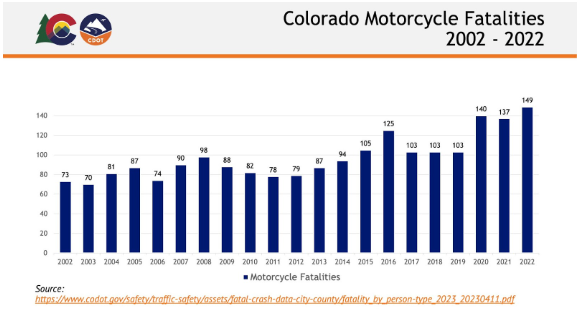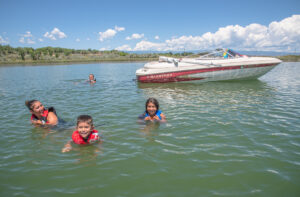With sustainability at the forefront of many people’s minds, reseller apps are gaining significant traction, with the global secondhand apparel market projected to reach $218 billion by 2026.
With this in mind, and with World Environmental Week approaching on June 5th, the team at BetColorado.comanalyzed Google search data from 20 of the most popular thrift and vintage apps, to reveal which states are leading the charge in combating fast fashion in 2023.
The top Colorado cities using thrift apps and sites revealed:
| Rank | Colorado | Thrift shop searches | Number of vintage stores |
| 1 | Denver | 306659 | 306 |
| 2 | Colorado Springs | 95843 | 95 |
| 3 | Aurora | 72125 | 72 |
| 4 | Littleton | 50875 | 50 |
| 5 | Centennial | 32554 | 32 |
| 6 | Boulder | 26529 | 26 |
| 7 | Longmont | 24390 | 24 |
| 8 | Loveland | 23296 | 23 |
| 9 | Greeley | 20944 | 20 |
| 10 | Grand Junction | 18539 | 18 |
| 11 | Greenwood Village | 14965 | 14 |
| 12 | Durango | 7519 | 7 |
| 13 | Windsor | 6444 | 6 |
| 14 | Louisville | 5671 | 5 |
| 15 | Aspen | 2993 | 2 |
| 16 | Fort Morgan | 2735 | 2 |
| 17 | Alamosa | 2431 | 2 |
| 18 | Basalt | 1318 | 1 |
| 19 | Monte Vista | 954 | 1 |
| 20 | Briggsdale | 146 | 1 |
In particular, Vermont has witnessed an impressive 22.7 searches per 100 residents per month, topping the list. This showcases the state’s enthusiasm for vintage shopping and highlights the increasing relevance of the vintage app industry.
States like Oregon, Washington, and Maine also show strong user engagement, each with search volumes exceeding 19 per 100 residents per month.
California, as the most populous state, revealed a staggering 7,529,750 monthly searches.
| Vintage/Resale apps | |||
| State | Searches Per Month | Population | Searches per 100 residences a month |
| Vermont | 147,170 | 647,156 | 22.7 |
| Oregon | 925,170 | 4,223,973 | 21.9 |
| Washington | 1,613,950 | 7,830,827 | 20.6 |
| Maine | 277,590 | 1,393,442 | 19.9 |
| California | 7,529,750 | 38,915,693 | 19.3 |
| Hawaii | 271,830 | 1,433,238 | 19.0 |
| Arizona | 1,341,350 | 7,453,517 | 18.0 |
| Rhode Island | 195,070 | 1,090,483 | 17.9 |
| New Hampshire | 248,930 | 1,402,957 | 17.7 |
| New York | 3,373,580 | 19,496,810 | 17.3 |
| Colorado | 1,013,640 | 5,868,555 | 17.3 |
| New Mexico | 360,630 | 2,110,011 | 17.1 |
| Wisconsin | 1,001,070 | 5,904,977 | 17.0 |
| Nevada | 537,280 | 3,209,142 | 16.7 |
| Idaho | 324,050 | 1,973,752 | 16.4 |
| Minnesota | 902,420 | 5,722,897 | 15.8 |
| Montana | 178,730 | 1,139,507 | 15.7 |
| Massachusetts | 1,082,790 | 6,974,258 | 15.5 |
| Florida | 3,380,580 | 22,661,577 | 14.9 |
| Pennsylvania | 1,910,040 | 12,931,957 | 14.8 |
| Iowa | 470,080 | 3,203,345 | 14.7 |
| Alaska | 106,490 | 732,984 | 14.5 |
| Tennessee | 1,021,420 | 7,134,327 | 14.3 |
| Connecticut | 518,930 | 3,629,055 | 14.3 |
| Missouri | 878,790 | 6,186,091 | 14.2 |
| Michigan | 1,422,320 | 10,030,722 | 14.2 |
| Virginia | 1,218,410 | 8,709,873 | 14.0 |
| West Virginia | 246,480 | 1,764,786 | 14.0 |
| Illinois | 1,714,450 | 12,477,595 | 13.7 |
| North Carolina | 1,461,950 | 10,832,061 | 13.5 |
| Nebraska | 261,430 | 1,972,292 | 13.3 |
| Ohio | 1,538,080 | 11,747,774 | 13.1 |
| Kansas | 371,880 | 2,936,378 | 12.7 |
| New Jersey | 1,167,400 | 9,255,437 | 12.6 |
| Maryland | 774,630 | 6,154,710 | 12.6 |
| Georgia | 1,381,270 | 11,037,723 | 12.5 |
| South Dakota | 115,170 | 923,484 | 12.5 |
| Kentucky | 557,570 | 4,518,031 | 12.3 |
| Indiana | 840,260 | 6,852,542 | 12.3 |
| Wyoming | 71,080 | 583,279 | 12.2 |
| North Dakota | 90,690 | 780,588 | 11.6 |
| South Carolina | 613,660 | 5,372,002 | 11.4 |
| Delaware | 117,350 | 1,031,985 | 11.4 |
| Texas | 3,414,360 | 30,500,280 | 11.2 |
| Alabama | 565,840 | 5,098,746 | 11.1 |
| Arkansas | 321,860 | 3,063,152 | 10.5 |
| Oklahoma | 423,800 | 4,048,375 | 10.5 |
| Mississippi | 288,450 | 2,930,528 | 9.8 |
| Louisiana | 443,790 | 4,553,384 | 9.7 |
| Utah | 286,530 | 3,422,487 | 8.4 |
Methodology
Using the top 20 most recognized vintage and thrift sites and apps, we were able to unveil the most sustainable states by analyzing the activity of their users. This data was subsequently divided by the population to determine the average number of active users per month.




